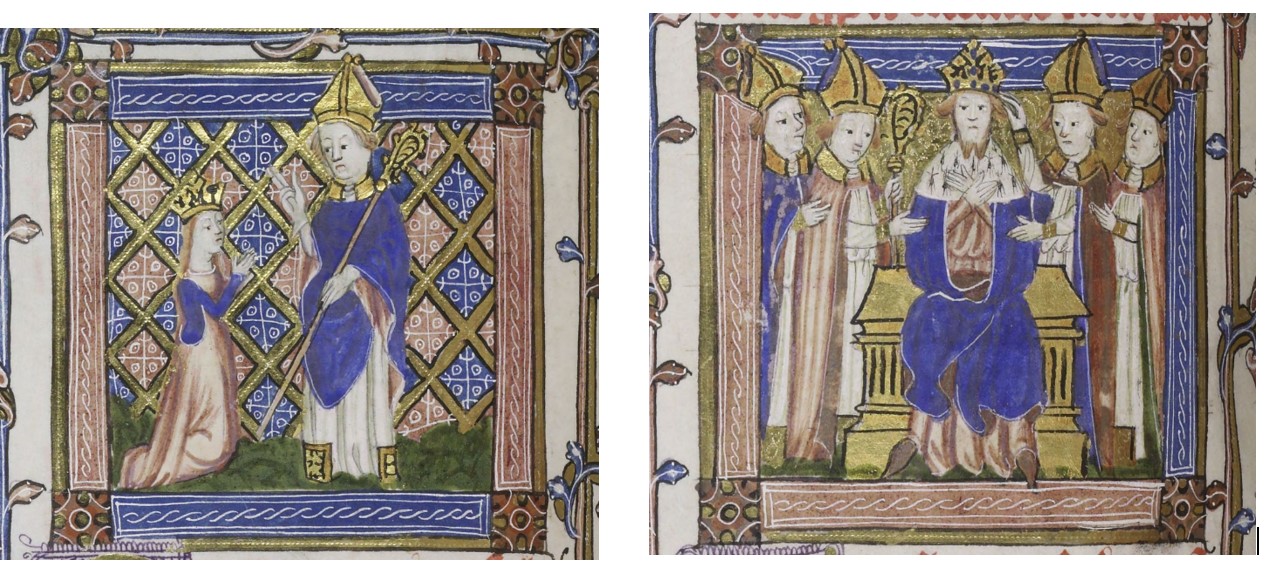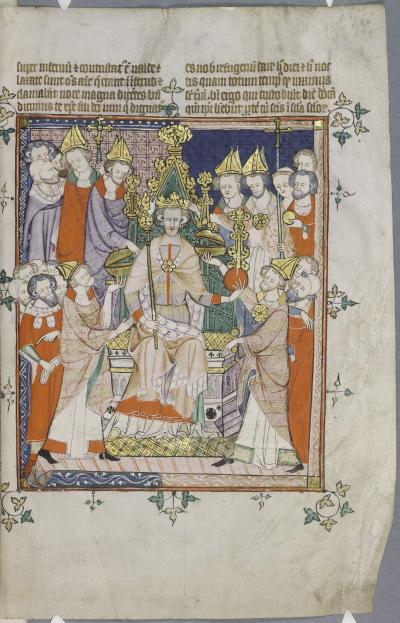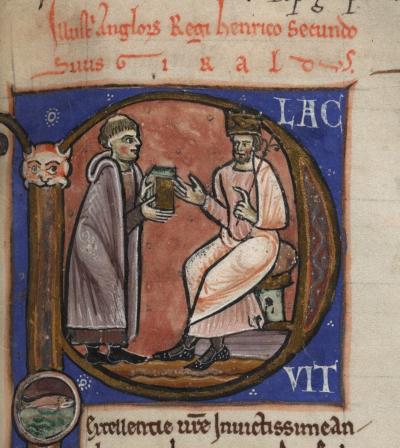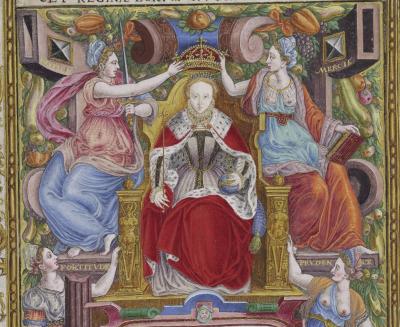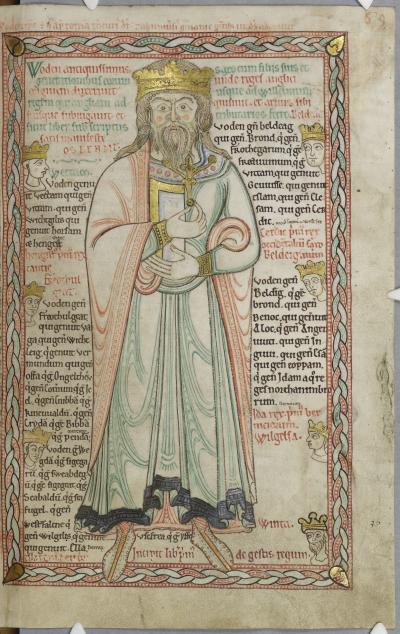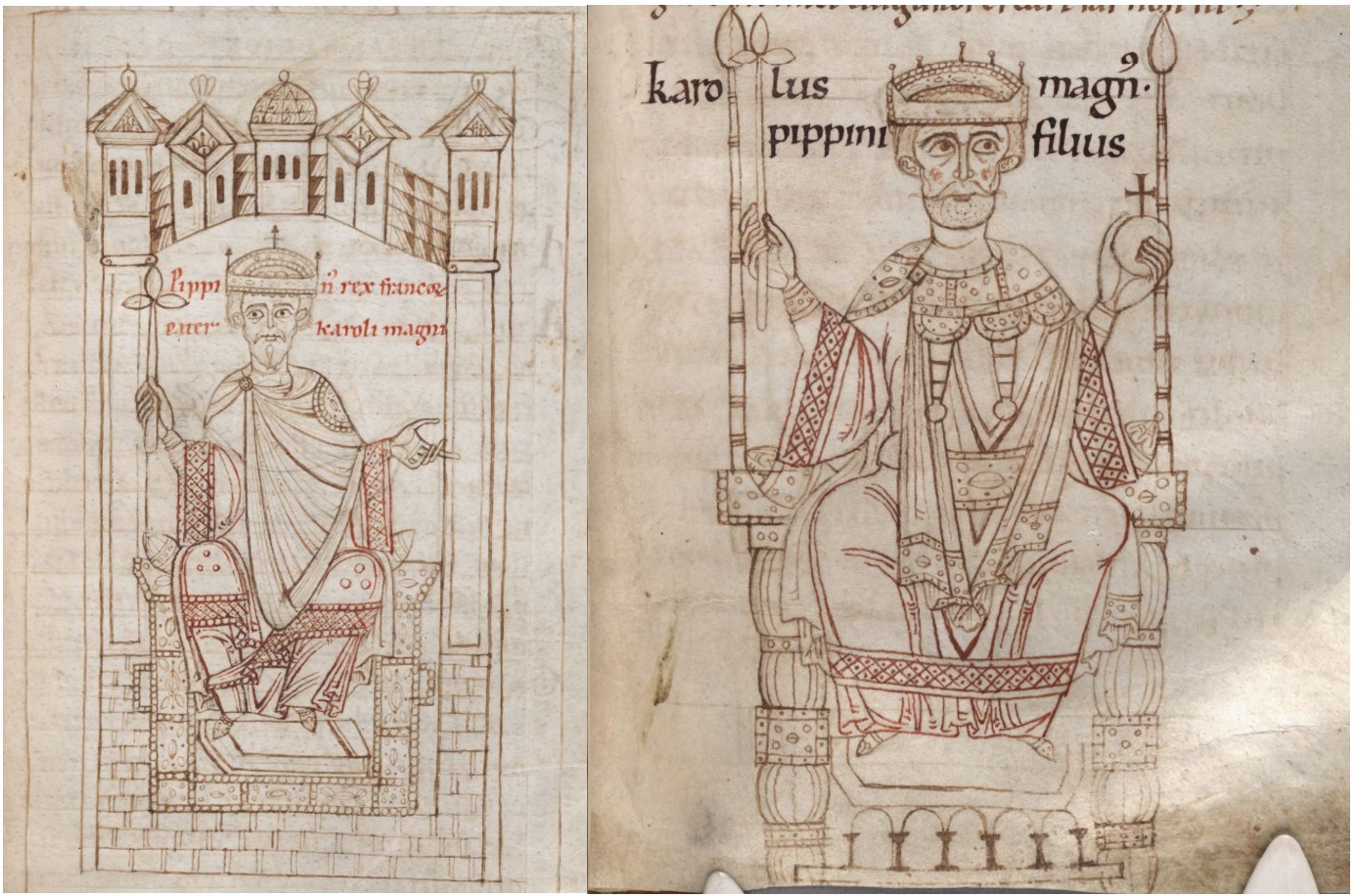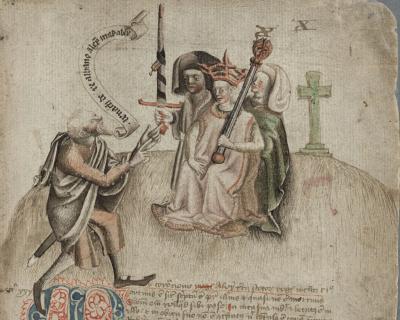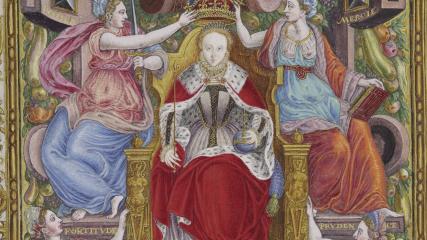Gold, crowns and coronations
Who could have escaped the news of the coronation ceremony of King Charles III which took place in Westminster Abbey on Saturday 6 May 2023? For the Parker Library of Corpus Christi College Cambridge the event was particularly memorable. As requested by the King, one of our greatest treasures, the 1,400-year-old Augustine Gospels (MS 286) was included in the Coronation ceremony. It was carried in by the Master, Professor Christopher Kelly, and was held by him during the reading from Gospel of Luke before the anointment.
Preparations for this historic event prompted us to take a new look at some of our manuscripts. We arranged a display in the Wilkins Room of some manuscripts and images that convey the significance of earlier coronations, of kings and queens, and how they are portrayed and remembered.
Liturgy and orders of service
Pontificals, the liturgical manuals for bishops and archbishops, present one view of the coronations. Our small exhibition offered not one, not two, but three different pontificals. Two of these are written in beautiful English book hands from the 11th and 12th centuries (MS 44 and MS 146), although they contain no illustrations. The 15th-century Pontifical (MS 79), however, is the most elaborate, and contains numerous luxurious, illuminated miniatures.
Blessing of a queen and coronation of a king (CCCC MS 79, f. 147v and f. 126v: c. 1400-1410, England)
Another textual witness to past coronations, are coronation ordos or ordines that lay out the order of service for coronations. A particularly gorgeous image accompanies our Coronation Ordo, which is itself appended to the end of the Apocalypse, written in Anglo-Norman French (MS 20). A large-scale illuminated picture presents a king in his full regalia, surrounded by the archbishops, bishops, magnates and other attendees who participated in the coronation and gave legitimacy to the new ruler.
Portrait of the Coronation of ‘Prince Edward’, possibly Edward III in 1327 (CCCC MS 20, f. 68r: c. 1330, England)
Tributes to kings and queens
Images of royals are plentiful in other types of sources too. One may appear, for example, sitting inside an initial as a patron receiving a book, as in the 13th-century collection of works by Gerald of Wales (c. 1146 - c. 1223) (MS 400).
Historiated initial with Gerald of Wales presenting a book to Henry II (CCCC MS 400, f. 5r: early 13th-century, England)
Naturally, given the history of the Parker Library and archbishop Matthew Parker’s (1504-1575) collection, the patron par excellence is Queen Elizabeth I (r. 1558–1603). She is depicted in her full regalia in this image pasted to the inside cover of our ‘Black Book’, now known as the Statutes of Corpus Christi College (MS 582).
Queen Elizabeth I portrait in her regnal glory with Justice, Mercy, Prudence and Fortitude supporting her majesty. (CCCC MS 582, inside front cover; mid-16th century)
Chronicles and histories
Medieval genealogies and histories focus on the powerful and wealthy. Historical events and narratives are intertwined with legends and myths. The alleged hereditary lines of several kingdoms in pre-Conquest England were drawn from the German pagan deity, Woden (Odin), who is presented here with a piercing gaze as if directly addressing the viewer (MS 66).
Woden and his sons (CCCC MS 66, p. 69; 12th-century, England)
A unique copy of a version of Ekkehard of Aura’s (fl. early 12th century) Chronicle (MS 373) presents the first of the Carolingian kings. It includes several portraits, such as an image of the enthroned Pepin the Short (c. 714-768) and another of his son and successor, Charles the Great (747-814).
Portrait of the enthroned Pepin the Short and of his son, Charlemagne (CCCC MS 373, f. 14r and f. 24r; 1114–25, Germany, Wurzburg)
The Scotichronicon by Walter Bower (1385-1449) (MS 171b) is a history of the kingdom of Scotland, beginning with the arrival of Scota, daughter of an Egyptian pharaoh. The chronicle was a continuation and expansion of the Chronica gentis Scotorum by John Fordun (d. after 1363). There are a few coloured full- and half-page drawings of major narrative events such as the Battle of Bannockburn and the coronation and funeral of the king of Scotland, Alexander III (r. 1249–86).
Half-page image of coronation of Alexander III, king of Scotland 1249–86 (CCCC MS 171b, f. 205r; 1447–1449, Scotland, Fife, Abbey of Inchcolm)
There is no question that medieval manuscripts are a fertile meadow from which to harvest a crop of kings and queens. All of these images and so much more are available for free on the Parker Library on the Web. Why not a take a stroll?
Tuija Ainonen
Sub-Librarian
Follow us on Twitter @ParkerLibCCCC

